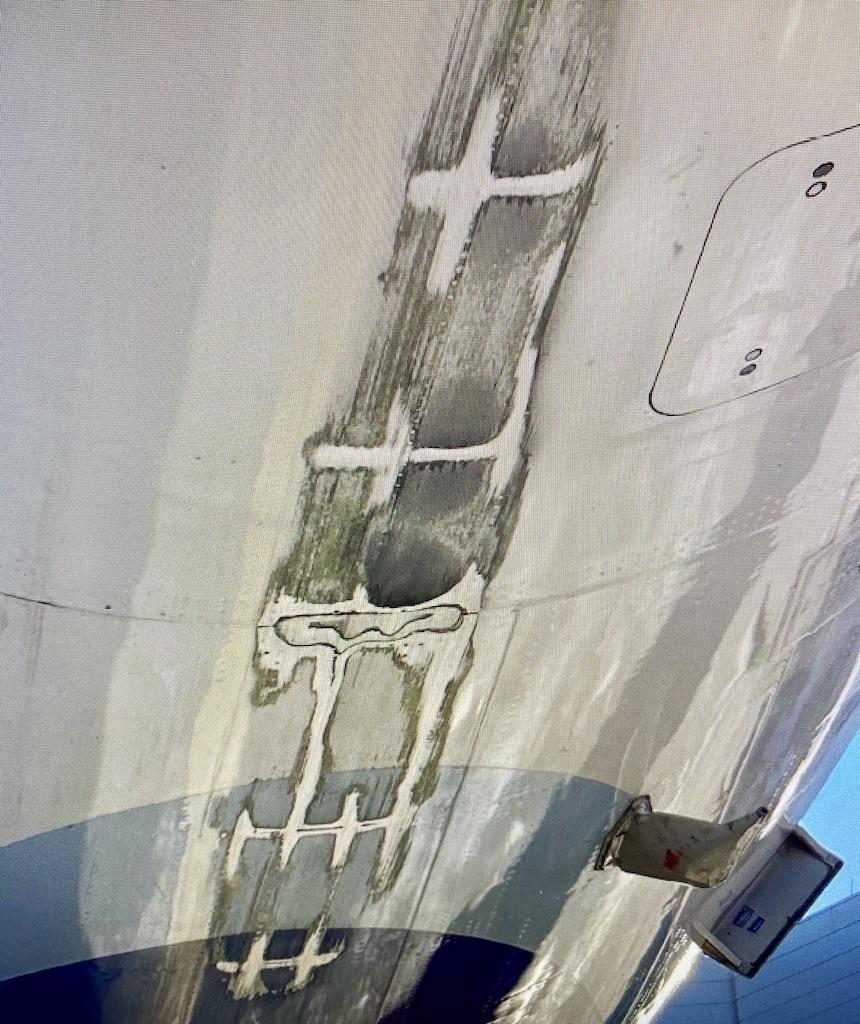
An airliner pilot was attempting to get airborne early to clear the flight path of an inbound King Air. In doing so, he was below the computed rotation speed and a tail strike occurred.
In Parts 2 and 3 of this article, we provide further examples of flight deck distractions.
A scheduled carrier incurred a tail strike on takeoff from Runway 10 at a U.S. airport, resulting in substantial damage to the airplane.
At about 11:48 the flight crew announced on the common traffic advisory frequency (CTAF) that it was leaving the ramp area to taxi to Runway 10 for departure. A few seconds later, the crew of a Beechcraft B300 King Air on an instrument flight reported on the local CTAF that they were “about 9 minutes out, coming from the East, but intending to use Runway 10 for landing. The universal communications frequency (UNICOM) operator responded to the King Air stating that there were “multiple aircraft inbound” and winds were calm and provided the altimeter setting.
After this exchange, the airline crew began discussing the active runway and the multiple inbound airplanes using Runway 10.
Two minutes later, the incident pilots contacted the Denver air route traffic control center (ARTCC) and reported that they were preparing for engine start and would be ready for departure in about 6 or 7 minutes. The Denver controller asked the flight crew if they were planning on departing from Runway 10, to which the crew concurred, and the Denver ARTCC controller instructed them to contact him when they were ready for departure.
About the time the crew was starting their second engine and conducting engine checks, the King Air flight crew was contacting Denver ARTCC to cancel their IFR flight plan because they had visually acquired the airport now intended to land on Runway 28, rather than circling to 10. The Denver ARTCC controller acknowledged the IFR cancellation, instructed them to squawk 1200 in the aircraft’s transponder and approved a radio frequency change.
The King Air pilots subsequently announced, at about 11:53 on CTAF that they were “going to go ahead and land two eight” and were “straight-in two eight right now.” About 10 sec. later, the incident flight crew announced on CTAF they were leaving the ramp area and were taxiing to Runway 10. UNICOM reported that multiple airplanes were inbound and winds were calm.
While the airline crew was performing after-start checklist, the King Air announced on CTAF they were on a “12-mile final two eight straight-in.” About 45 sec. later, the King Air asked on CTAF if anyone was about to depart from Runway 10, and the airliner flight crew replied that they intended to hold on the taxiway near the end of Runway 10 and wait for a clearance from Denver ARTCC. The King Air replied they were on a “10-mile final, two eight, straight-in.” The airline flight crew said “alright, copy” and that they would keep an eye out for them.
About 11:55, the airline flight crew contacted Denver ARTCC and reported they were ready for departure on Runway 10. The Denver center controller cleared them to their destination as filed, with a 2-min. clearance void time. The flight crew read back the clearance including the 2-min. void time restriction.
At 11:56, the crew announced on CTAF that they had received their clearance and would be departing on “runway one zero”. Within 5 sec., the King Air pilots reported they “had a king air on final two eight” and that they “had been calling.” The crew on the ground replied on CTAF that they thought the King Air was “8 or 9 miles out,” to which the King Air replied they were 4 miles out, “even less than that.”
- Distraction: For whatever reason, the departing crew had expectations that the King Air approaching Runway 28 was west of the airport.
The first officer officer, the pilot monitoring (PM), stated that they looked for the King Air both visually and on their onboard traffic alert and collision avoidance system and did not see any air traffic. The crew acknowledged the King Air, looked for traffic approaching Runway 10, and announced on CTAF that they were beginning their takeoff from Runway 10.
The King Air’s flight crew replied that they were on a short final and “I hope you don’t hit us.” Even this did not jar the departing crew out of the expectation that the King Air would be behind them during their take off. When the airliner taxied onto Runway 10, the King Air was on a reciprocal course 4.91 nm from them.
The airliner increased thrust for takeoff at about 11:57. About 11 sec. later, just prior to the 80 kts call out, the PM asked the captain, the pilot flying (PF), if the King Air was on Runway 28. The captain asked “is he?” to which the PM said, “Yes, he is on 28, do you see him?” to which the captain said “no.” After the event, the first officer explained that he observed traffic directly ahead on the TCAS during the takeoff run and pointed it out on the display to the captain.
About 20 sec. after they started their take off on Runway 10, the flight crew of the King Air asked if they were going to do a quick turn-out, to which they replied, “yes sir.” Concurrent to this conversation, the captain pitched the airplane up, 24 kts before rotation speed, to avoid the approaching King Air and subsequently struck the tail on the runway surface. He began a climbing right turn away from the traffic indicated on the TCAS. The captain and first officer both stated they never visually acquired the approaching King Air.
In summary, in the heavy departure, the captain expected a higher airspeed to be commanded, guided by the flap setting he called for. When that didn’t happen, he took command and reduced power to protect the flaps concerned with the commanded auto speeds. This led to the flaps coming fully up in a heavy configuration and reduced power when it should have been max or climb.
An airline crew is cleared to land on one runway but aligns the aircraft with a parallel runway, in Part 3 of this article.
One Distraction Could Have Serious Consequences Part 1: https://aviationweek.com/business-aviation/safety-ops-regulation/one-di…





